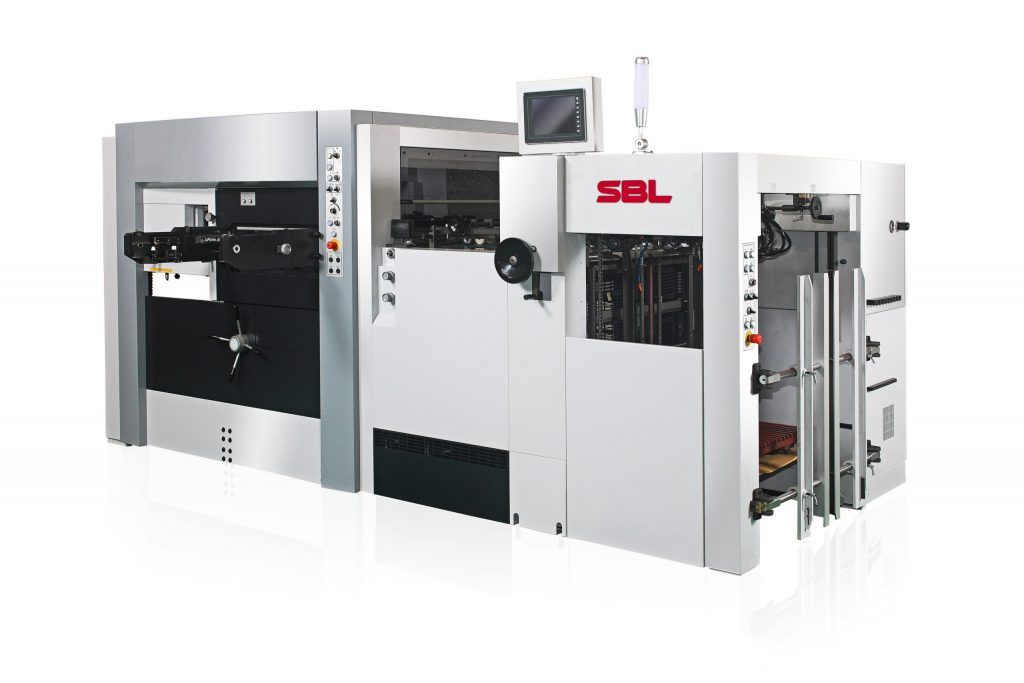Die cutting is one of the most reliable methods for cutting out and forming predetermined shapes from a range of materials. It delivers a quick, precise clean cut, perfect for large productions. The question is: which machine can help you achieve the maximum potential of die cutting?
The two most popular options are flatbed and rotary die cutting machines. Both choices have their pros and cons, which can work to your advantage or disadvantage, depending on your business needs.
SBL Machinery lists the differences between the two kinds of industrial die cutting machines, helping you choose the best one for your business.
Rotary Die Cutting
Electrically operated, a rotary die cutter uses a rotating cylindrical die, which is also called a die station. You feed the material through the die station, which holds a rotary tool that cuts the sheets into smaller shapes or perforations.
Depending on the specs of your machine, rotary die cutting can produce complicated multi-layer custom-cut products. The machine can perform multiple functions in the same processing cycle – cutting, placing and laminating materials from the start until the end of the cycle.
The constant rotation of the machine means there’s no lost or unproductive motion, unlike with flatbed die cutters.
One great example of a rotary die cut product are adhesive bandages. The rotary die cutter cuts and perforates the plastic and applies the cloth middle and the peel-back tabs – all in the same processing cycle.
Pros of Rotary Die Cutting
- Great for high-volume orders because of the machine’s cutting speed
- Offers an exceptional level of precision that exceed flatbed machines, making it the better choice for materials that are difficult to manipulate
- Can perform multiple functions at once, including printing, perforating and laminating
- Allows kiss cutting, which cuts through the main material but leaves the backing paper intact
Cons of Rotary Die Cutting
- Rotary die cutting is more expensive compared to flatbed because of the cost of machining the die.
- Engraved dies are also expensive to purchase and maintain.
- It requires larger production runs to justify the costs associated with tooling and set-up.
- It doesn’t work well for thicker, denser materials.
- Also, the material has to be on a roller so that it feeds into the machine continuously. This means you can’t use materials that only come in sheets.
Flatbed Rotary Die Cutting
A flatbed die cutter is hydraulically operated. It uses a steel rule die that’s bent in a way that matches the shape you want to produce. When the machine cycles, hydraulic pressure drives downward through the material to punch out die-cut parts. The vertical motion can result in some curvature on the edges of the finished products. But you can avoid this through proper techniques.
Pros of Flatbed Die Cutting
- Can cut through much thicker, denser materials because the machines can be opened wide
- More affordable than rotary die cutting because of lower tooling and machine costs
- Can group parts more closely on the sheet, reducing scrap materials and waste
- Can work with a larger variety of materials, whether they’re thick or thin, or come in sheets or rolls
Cons of Flatbed Die Cutting
- The main downside of flatbed die cutting is that it has a much slower production rate. This can be a problem if you have high production needs.
- It doesn’t have a multi-function feature, unlike rotary die cutting that can print, perforate and laminate.
- A flatbed die cutter takes longer to set up because of the steel rule die.
- Flatbed die cutting doesn’t have the same level of precision as rotary die cutting, although the cuts are still clean and accurate.
Questions to Consider when Choosing
When choosing between a flatbed and a rotary die cutter, ask yourself the following questions to determine the best choice for your production needs:
- How thick is the material? Both rotary and flatbed die cutting are applicable for thin materials. But if you’re working with a material that’s more than 1/8-inch thick, a flatbed die cutter is the better option.
- What are your volume and speed needs? If you have high-volume orders and need fast turnaround times, you may want to choose rotary die cutting. Otherwise, a flatbed die cutter should suffice for the size of your operations.
If you’re still unsure of which die cutting machine to get, SBL Machinery can help you make the right choice. Our experts will ask for more details about your production needs and budget so we can help you make the best decision for your business.
SBL Machinery carries an extensive range of die cutting machines and other packaging equipment, meeting different production requirements.
Browse our selection of automatic flatbed die cutting machines on our online catalogue. For enquiries, fill out our contact form.


Related Posts
A sneak peek of 2024 DRUPA⼁From background history to current situation, exhibition products, and visitor results at once
Read MoreHot Stamping Machine Installation and Acceptance Guide: 3 Key Considerations for Buyers
Read MoreFolder Gluer Machine Installation and Acceptance Guide: 3 Key Considerations for Buyers
Read More